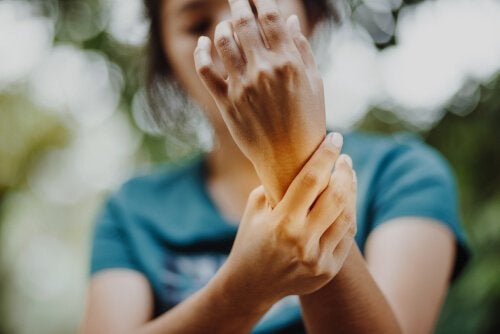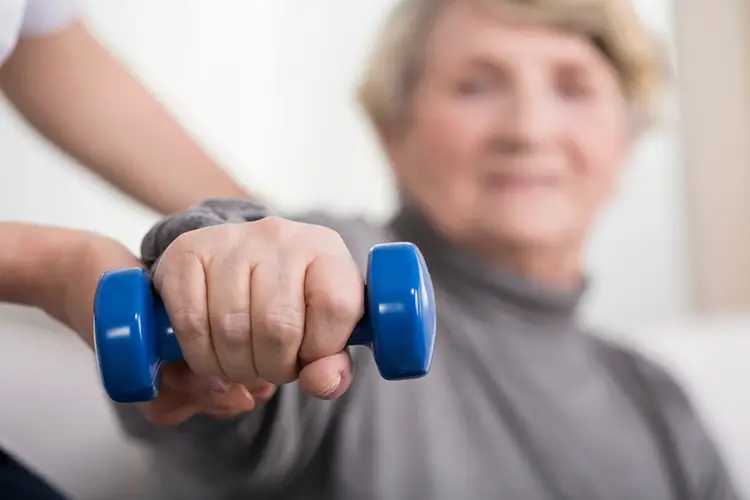Alien Hand Syndrome Types, Cause & Representation In Movies And TV Shows

Alien Hand Syndrome is a rare neurological disease that usually affects either of the hands and sometimes may affect the legs too. This bizarre disorder causes one of the hands to dissociate and act on its own as if it is controlled by someone else. 
Alien Hand Syndrome (Photo source: Exploring your mind)
The History
In 1908, German neuro-psychiatrist Kurt Goldstein wrote about a woman who suffered a stroke that affected the left side of her brain. She was recovering well when her left arm started acting on its own. She claimed that she was not moving it herself, and the hand made several infrequent movements such as rubbing her eyes, touching her face, and grabbing things on its own.
This was perhaps the first reported case of the alien hand syndrome ever documented.
Alien Hand Syndrome Types & Symptoms
Alien hand syndrome is usually of three types that affect three different parts of the brain. The medial frontal cortex, corpus callosum, and the parietal lobe. Damage to these three parts of the brain leads to a slightly different variation in the symptoms.
Medial Frontal Cortext: The medial frontal cortex is the part of the brain that is responsible for decision making, personality expression, and moderating aspects of speech and language. Damage to this part of the brain may cause a case of alien hand syndrome. The symptoms include mischievousness of the dominant hand, grabbing objects, and not letting them go.
Corpus Callosum: Damage to the Corpus Callosum leads to the left hand acting on its own. A 55-year-old woman Karen Byrne from New Jersy, started to notice that her left hand moved on its own. She had undergone brain surgery for epilepsy.
Byrne’s reported that the hand would be out of control: “I’d light a cigarette, balance it on an ashtray, and then my left hand would reach forward and stub it out.”
“It would take things out of my handbag, and I wouldn’t realize so I would walk away. I lost a lot of things before I realized what was going on,” she explained.
Parietal Lobe: This form of alien hand syndrome is seen after damage to the parietal lobe. The parietal lobe is the part of the brain that is responsible for the processing of sensory information like touch and pain.
James Cooke, who also went under the knife for brain surgery, developed symptoms of alien hand syndrome. He also lost his control over his left hand and struggled even to lift two fingers up.
“I’m mentally saying hey, put two fingers up,” he said in an interview with CBS as he tried to hold them up.
“My left hand has a mind of its own, so it’s always alien to my body,” he added.

Research among other patients has shown that this form of AHS seems to lead to an “estrangement” from the left arm.
Alien Hand Syndrome Causes
Studies conducted by researchers show that the common causes of alien hand syndrome include neurodegenerative diseases, strokes, migraines, seizures, and tumors with damage to the aforementioned parts of the brain.
With only about four dozen reported cases, there is no known cure for AHS. However, the management of AHS includes giving the affected hand something to hold and play. Physiotherapy and behavioral therapies also play a crucial role in managing this disease.
In severe cases, injecting botox and neuromuscular blocking agents is said to be reasonable interventions.
Representation in Pop Culture
The sheer mystery and weirdness of alien hand syndrome have prompted a lot of creative minds to explore the horrific and the comedic side of this disease.
The year 1935 marked the first portrayal of AHS on the big screen with the movie Mad Love, which is about how an obsessed doctor replaces the hands of his former lover with those of a murderer. Similarly, the year 1981 saw the release of The Hand, a movie that revolves around a castrated arm of a comic book artist which takes on a murderous persona.
In Addams Family (1938), the hand (“The Thing”) affected by AHS serves as a humorous side-character in the wacky premise of the movie. Although “The Thing” does not get a backstory of its own, the sentient hand nods to the concept of AHS.
A more realistic side of the alien hand syndrome was portrayed in the 1964 movie Dr. Strangelove. This masterpiece movie by Stanley Kubrick presented a humorous side to the alien hand syndrome and was perhaps the first of its kind.
Various TV shows such as The Simpsons, House MD, Scream Queens, and Rick and Morty have also portrayed AHS.
​​​​